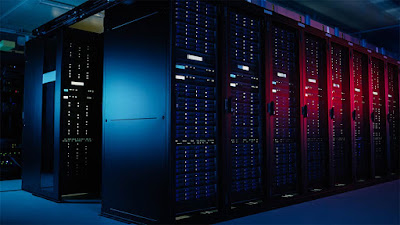Understanding the Basics of Hot Aisle Containment
To manage data centre airflow effectively, facilities must prevent the mixing of airstreams. Doing so allows cooling systems to operate efficiently. Data centres configure their spaces in a hot-aisle-cold-aisle layout. They supply cold aisles with cold conditioned air to cool the servers, while hot aisles fill with the hot exhaust air exiting the IT equipment. Preventing these two different airstreams from mixing plays a crucial role in reducing and managing operating costs and improving operational performance. When facilities fail to do this, recirculation causes hot spots, increases energy consumption, and risks hardware failure.Hot Aisle Containment addresses this challenge by fully enclosing the hot aisle, thereby containing, and directing the hot exhaust air directly back to the CRAH/CRAC cooling units. This physical barrier prevents mixing of the two airstreams. By installing roof panels and end-of-row doors, a HAC system isolates the hot exhaust air and creates a more predictable, efficient cooling environment.
Benefits of Hot Aisle Containment
By adopting Hot Aisle Containment, data centres can achieve several benefits, including:
- Enhanced Cooling Efficiency: Hot Aisle Containment prevents the mixing of hot and cold airstreams, enabling data centres to optimise cooling units so that they operate more efficiently.
- Reduced Energy Consumption: As cooling units operate more efficiently, data centres consume less energy, which results in significant cost savings—especially since cooling can account for up to 40% of a data centre’s energy use.
- Lower Operating Costs: By consuming less energy, data centres lower their operating costs and improve overall financial performance.
- Improved Equipment Reliability: Hot Aisle Containment provides a more stable and temperature-controlled environment, helping IT equipment perform better and last longer, which reduces downtime and costly replacements.
- Improved PUE and Reduced Carbon Footprint: By optimising cooling, data centres improve their Power Usage Effectiveness (PUE), which indicates efficiency, and lower energy consumption leads to a smaller carbon footprint.
EDP Hot Aisle Containment Systems
With over 15 years’ experience installing aisle containment systems, EDP unlocks your data centre’s full potential. We design, manufacture, and install bespoke containment systems with a focus on flexibility, responsiveness, unparalleled quality, and reliability. We ensure that your operations run smoothly, efficiently, and with maximum uptime. Our systems suit retrofit, new build, colocation, and hyperscale Data Centres.
Benefits of using EDP Aisle Containment systems:
- Engineered in the UK – Trusted Worldwide: We manufacture our products in the UK and support them with skilled installation teams across the UK, Europe, and the USA, delivering global reach alongside local expertise.
- Flexible, Scalable and Future-Ready: Our modular design lets your systems grow with your requirements. Whether floor-mounted or ceiling suspended, they adapt seamlessly to any environment.
- Turnkey Solution: Our rack-independent aisle containment systems streamline installation and minimise disruption, ready for you to deploy immediately.
- Tailored to Fit – Built to Perform: We custom design solutions to work around obstacles, accommodate different rack heights, and future-proof expansion, ensuring perfect integration every time.
- Easy Access: Our premium zero-threshold synchronised sliding doors open fully to the aisle width, providing you with smooth, reliable access.
Work with EDP to elevate your data centre’s efficiency now and into the future. Contact us today to learn more about how our hot and cold aisle containment systems can benefit you.








